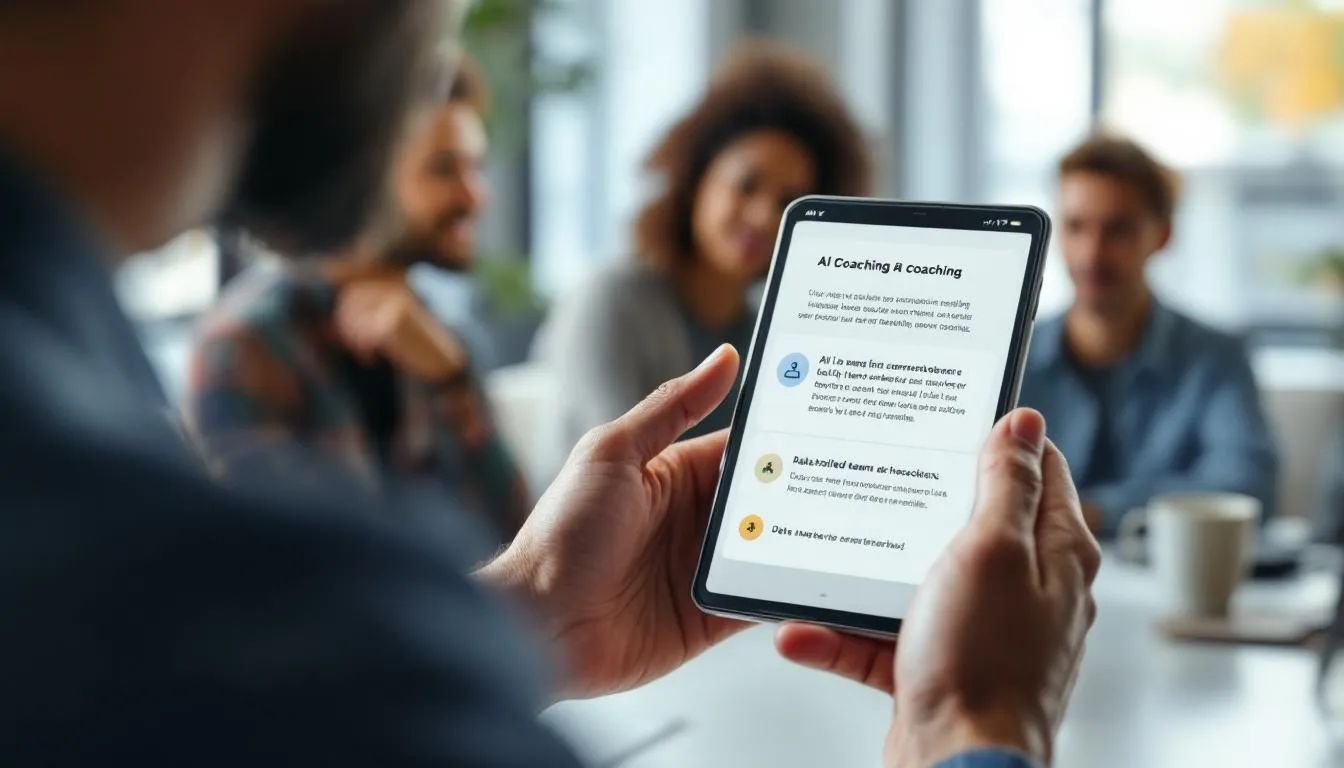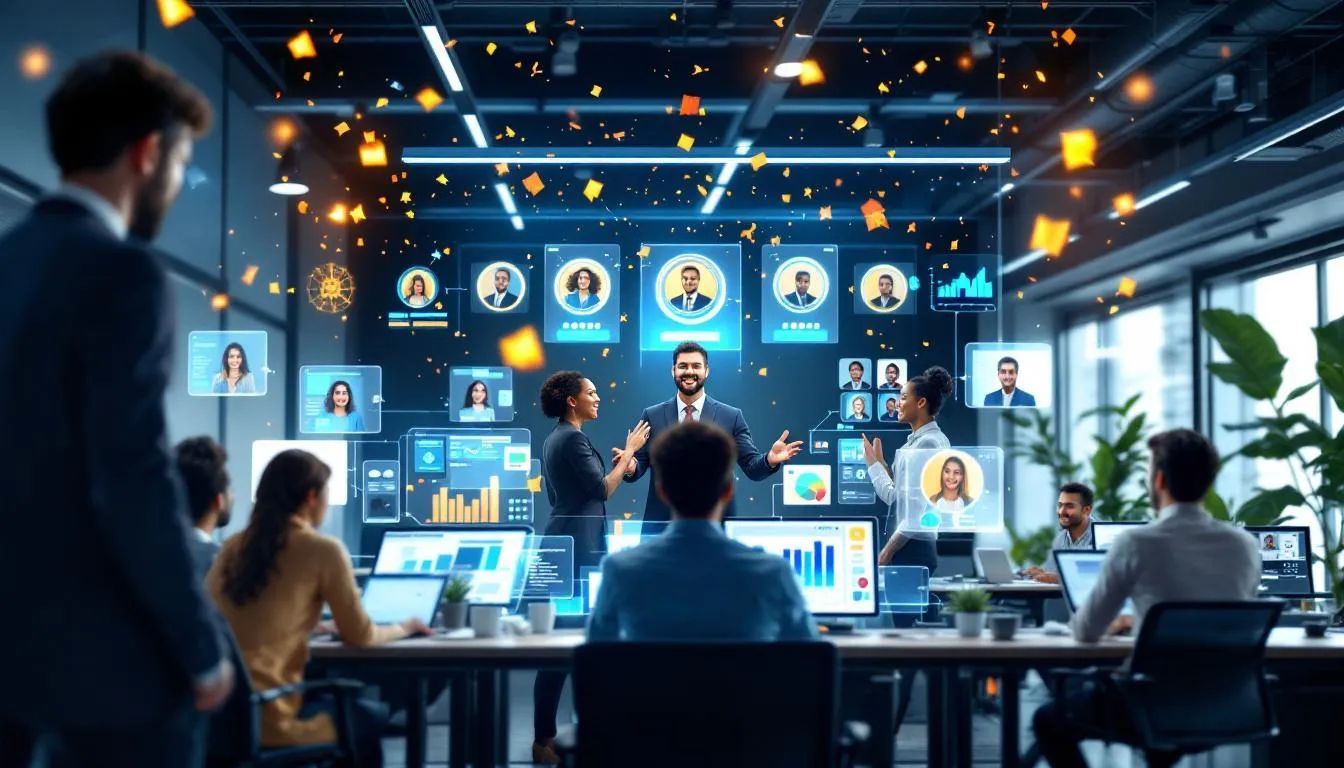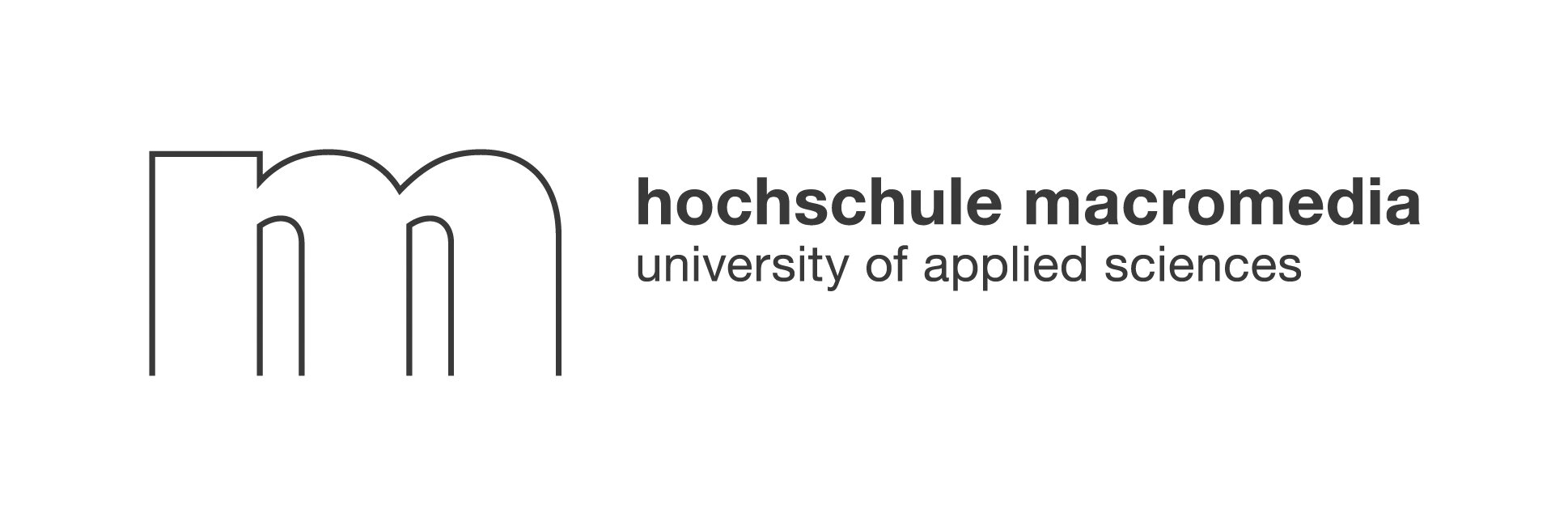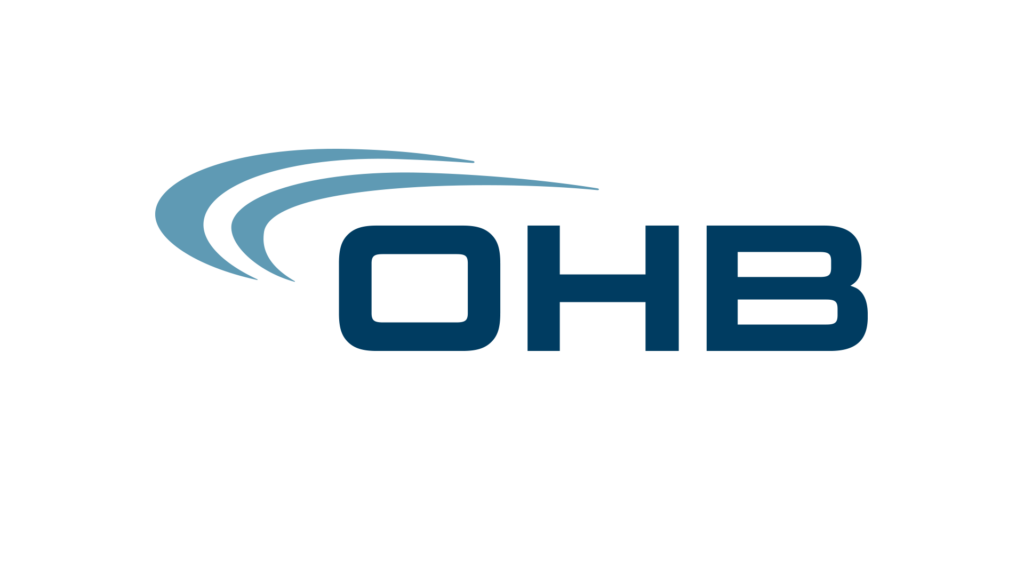Employee recognition has always been the secret sauce of high-performing teams. But in 2025, with hybrid and remote work now the norm, traditional recognition programs are struggling to keep people truly engaged. Generic rewards, one-size-fits-all shoutouts, and disconnected digital gestures often fall flat. Enter AI in employee recognition—a movement that’s not just reshaping how we say “thank you,” but also how we build trust, foster belonging, and fuel performance across physical and virtual workplaces.
Today, companies like Neroia are leading a revolution. They’re using AI to turn recognition from a box-ticking exercise into a dynamic, organic experience that sparks authentic connections. But how exactly does this work? And why is AI in employee recognition such a perfect fit for the new world of work? Let’s dive in.
1. Why AI and Employee Recognition Are a Perfect Match in 2025
The rising stakes for engagement and retention
In 2025, organizations face a clear challenge: keeping employees engaged and loyal in an era of digital overload and physical distance. According to SHRM, businesses with effective recognition programs are 31% more likely to see increased employee engagement and 29% more likely to report stronger retention. Yet, many legacy systems still rely on annual awards or generic e-cards that barely register in the minds of hybrid teams.
The stakes are higher than ever. Employees, especially those working remotely, crave real, timely acknowledgment for their contributions. Recognition is no longer just about rewards; it’s about building a culture where people feel seen, valued, and connected—regardless of location.
Key differences between AI-powered and traditional programs
Traditional recognition programs often miss the mark due to:
- Generic rewards: Gift cards or points that lack personal meaning.
- Delayed feedback: Praise that arrives weeks after the achievement.
- Manager-only focus: Top-down recognition, with little peer-to-peer input.
AI in employee recognition flips this script by:
- Personalizing rewards based on individual interests and achievements.
- Delivering real-time feedback whenever and wherever great work happens.
- Enabling peer-to-peer recognition and surfacing unsung heroes across the organization.
As a result, AI-driven approaches like Neroia’s don’t just automate recognition—they make it smarter, more inclusive, and more impactful.
2. Behind the Algorithms: How AI Spots Moments Worth Celebrating

Real-time achievement tracking across tools
AI in employee recognition thrives on data. By integrating with productivity platforms, project management tools, and communication apps, AI can monitor milestones as they happen. For example, when a team completes a project ahead of schedule, the system instantly flags the achievement and suggests recognition opportunities.
This real-time tracking ensures that no win goes unnoticed. Employees receive praise when it matters most, reinforcing positive behaviors and boosting morale on the spot.
Sentiment analysis inside chat channels
Modern AI doesn’t just count completed tasks—it understands context. By analyzing conversations in chat channels, AI can detect moments of collaboration, creative problem-solving, or even when someone steps up to help a colleague. Sentiment analysis tools scan for positive interactions and recommend recognition, making sure that behind-the-scenes contributions get their moment in the spotlight.
“AI can help track achievements in real time. For example, they can flag the moment a team member meets their sales target and send you a notification.”
— Applauz, 2024
This technology is especially powerful in hybrid environments, where spontaneous “great job!” moments are easy to miss.
3. Personalization at Scale: Tailoring Rewards With Machine Learning
Data-driven reward suggestions employees actually want
One of the standout benefits of AI in employee recognition is its ability to recommend rewards that truly resonate. By analyzing employee preferences, engagement data, and even past recognition history, AI suggests options that feel personal—whether that’s tickets to a local event, a favorite book, or a wellness experience.
Neroia takes this a step further by using AI to curate micro-events, like yoga sessions or cycling meetups, tailored to employees’ interests and schedules. These small-group activities create space for organic connection, making recognition feel both meaningful and memorable.
Adaptive nudges that coach managers to give timely praise
AI also acts as a coach for managers, nudging them to recognize achievements as they happen. If someone’s contributions are going unnoticed, the system can prompt managers with specific examples and even suggest the right words or tone for their message.
“Our platform will coach the writer of an award message to be more comprehensive and nudge them to talk about the impact to the business.”
— Tom Libretto, Workhuman, 2025
This guidance ensures recognition is both timely and authentic, helping managers and peers become better at celebrating each other’s wins.
4. Rolling Out AI in Employee Recognition Programs: A Step-by-Step Plan
Implementing AI in employee recognition doesn’t have to be overwhelming. Here’s an effective approach:
Audit your data and privacy safeguards first
Before introducing AI, review what data you collect, how it’s stored, and who has access. Privacy is paramount, especially when dealing with sensitive employee information. Neroia, for example, uses anonymized data and a secure, closed community to maintain trust while delivering insightful analytics.
Select the right platforms and integrations
Choose solutions that integrate seamlessly with your existing HR and communication tools. Look for platforms that support real-time data flow, robust analytics, and flexible reward options. Neroia’s platform stands out by connecting recognition, engagement, and curated micro-events in one ecosystem.
Pilot, iterate, and train champions
Start with a pilot group to gather feedback and refine the process. Train internal champions—managers and peer leaders—on how to use AI-driven features. Encourage open dialogue and adapt the program based on real-world results.
Step-by-step implementation checklist
- Assess current recognition practices and data privacy.
- Select AI-powered recognition platforms with strong integration capabilities.
- Launch a pilot program with a small, diverse team.
- Gather feedback and adjust features as needed.
- Train managers and peer leaders on AI tools and best practices.
- Roll out organization-wide with ongoing monitoring and support.
5. Keeping It Human: Avoiding Bias and Maintaining Authenticity
Ethical data use and transparency guidelines
AI in employee recognition can only succeed if employees trust the process. Be transparent about what data is collected, how it’s used, and the safeguards in place. Regularly audit algorithms to identify and correct any biases, ensuring everyone has an equal opportunity to be recognized.
Neroia prioritizes employee-centricity and privacy, using only anonymized data for analytics and never sharing personal details outside its secure community.
Balancing automation with genuine human touchpoints
While AI can surface opportunities and automate reminders, recognition must still feel personal. Encourage managers and peers to add their own words, share stories, or celebrate wins in person or via video calls.
“Recognition must feel authentic and meaningful to be effective. Don’t make it so systematic that it becomes robotic.”
— Applauz, 2024
The most successful programs use AI to empower, not replace, human appreciation.
6. Measuring What Matters: Analytics to Prove ROI of AI-Driven Recognition
Engagement and culture metrics to watch
AI-powered platforms deliver actionable insights on:
- Recognition frequency: How often employees are celebrated.
- Participation rates: Who is giving and receiving recognition.
- Sentiment scores: How employees feel about their work and culture.
Tracking these metrics helps organizations spot trends, address gaps, and continuously improve their recognition strategies.
Linking recognition insights to retention and performance
Studies have shown that effective recognition programs can reduce turnover by up to 31% and increase productivity by 14%. By connecting recognition data with retention and performance outcomes, companies can clearly demonstrate the business value of their investment.
Here’s a sample table showing key metrics before and after implementing AI in employee recognition:
These improvements reflect how AI-driven, personalized recognition—especially when paired with micro-events like those curated by Neroia—translates into measurable business results.
7. Future Trends for AI in Employee Recognition and Broader HR
Generative AI for storytelling and kudos videos
The next wave of AI in employee recognition will include generative tools that help teams create custom kudos videos, write heartfelt stories, or even design digital “thank you” cards. These creative touches make recognition more vivid and memorable, especially for distributed teams.
Predictive timing: rewarding effort before disengagement strikes
AI is also getting better at predicting when employees need a morale boost. By analyzing engagement patterns, workload, and sentiment, AI can alert managers before someone starts to disengage, enabling proactive recognition and support.
“AI can predict and prevent employee disengagement trends over time. As a leader, you can then take measures to curtail those patterns.”
— Applauz, 2024
Neroia’s platform, for example, identifies when employees might be at risk of disconnecting and suggests micro-events or recognition moments to re-engage them—like inviting someone to a lunchtime yoga session or a small-group cultural exchange.
Why Traditional Recognition Falls Short in Hybrid Workplaces
- Generic, impersonal rewards that lack meaning
- Delayed feedback that misses the moment
- Siloed recognition—often only from managers
- Disconnected digital gestures in remote settings
- Lack of peer-to-peer appreciation
How Neroia’s AI-Driven Micro-Events Transform Recognition
- Effortlessly discover and join activities tailored to your interests and schedule
- Build authentic connections through small-group events (e.g., yoga, cycling, cultural meetups)
- Enjoy seamless coordination via AI-powered chat and calendar integrations
- Receive recognition in real time, embedded within engaging experiences
- Benefit from anonymized analytics that respect privacy and inform HR strategy
Comparing Traditional vs. AI-Driven Employee Recognition
Neroia in Action: Real-World Impact
During recent pilots, Neroia’s AI platform orchestrated a series of micro-events—like company runs, yoga sessions, and cultural exchanges—designed to bring hybrid teams together. Employees received recognition not just for hitting targets, but for showing up, supporting peers, and living company values in real-world settings.
AI-powered chatbots handled the logistics, nudging participants, suggesting new activities, and providing anonymized feedback to HR. The result? Higher participation, deeper connections, and a surge in both engagement and well-being metrics.
“Neroia’s AI-driven recommendations make it easy for employees to connect and be recognized in ways that feel authentic, not forced. It’s a game-changer for hybrid teams.”
— HR Leader, OHB Pilot Program
The Path Forward: AI, Recognition, and the Future of Work
AI in employee recognition is not about replacing human connection—it’s about enhancing it. By using technology to surface the right moments, suggest meaningful rewards, and break down barriers between remote and in-person colleagues, platforms like Neroia are redefining what recognition can achieve.
Looking ahead, organizations that leverage AI to personalize, automate, and humanize recognition will be best positioned to boost morale, retain top talent, and cultivate cultures where everyone feels valued. As hybrid work evolves, the ability to foster organic, authentic relationships—powered by smart technology—will be the true differentiator.
For companies seeking to transform their approach, Neroia offers a flexible, privacy-first platform that integrates seamlessly with existing tools and external resources. By championing micro-events, peer-to-peer recognition, and actionable analytics, Neroia is setting the standard for AI in employee recognition—making work more connected, rewarding, and human than ever before.
Ready to experience the future of employee recognition? Discover how Neroia can help your team thrive in 2025 and beyond.




